Useful tips: what you can do with mushrooms
By its name Champignon are obliged to the French, who called them champignon, which means mushroom. Their fields of application are different, but they are most often used in cooking. The size of the fruiting body can range from 2 to 30 cm.
Champignons taste good. They have become available and popular due to the fact that they performed well in artificial cultivation. And today mushrooms can be enjoyed at any time of the year.
Content:
- How to recognize champignons
- Composition and useful properties
- To whom mushrooms are contraindicated
- Areas of application of mushrooms
- How to choose quality champignons
- Methods for harvesting and storing mushrooms
How to recognize champignons
All mushrooms have a fleshy body, which consists of a stem topped with an elastic cap. The color of the mushrooms ranges from white to light brown, depending on the place of growth and the age of the mushrooms. Young specimens are distinguished by rounded closed caps, but as they grow, they open up and acquire a flatter appearance. The diameter of the caps can be either 2 cm or 25-30 cm, and their surface is often covered with scales, slightly darker than the main color.
The inner side of the caps is represented by spore plates, which are colored light brown with a pink tint. But as the spores mature, the plates gradually darken and become dark brown, and then black. The hat is attached to a white high leg, the height of which can reach 10 cm, and the diameter is 5 cm. The legs have a dense structure, but there are specimens in which they are hollow or loose. The edges of the closed caps are crowned with a dense film, which, as the mushroom grows, separates from the cap and gradually moves to the stem, forming a "skirt".
In the context of the mushrooms, predominantly white, but tends to quickly oxidize and change color to brown.
There are more than 200 types of champignons in the world, among which there are poisonous representatives. Of the edible species, the most common are:
- field mushrooms
- meadow
- garden or double-yard
- steppe or bernard mushrooms
- forest
- August
- two-ring
If a mushrooms are grown at home, then they should be collected when the caps have not yet opened, and the unbroken ring only passes to the leg. Harvesting is carried out daily. The leg should not be cut off, but carefully unscrewed from the ground.
Composition and useful properties
Champignons are nutritious, but low-calorie food. One hundred grams of mushrooms contains 27 kcal. The composition of champignons is full of a large number of useful components:
- amino acids
- vitamins
- macronutrients
- microelements
- ash and dietary fiber
- omega-6 and omega-9 acids
Although mushrooms are 90% water, it is from champignons that the active ingredients are extracted from which antibiotics are produced. Champignons are an excellent substitute for animal protein and are ideal for vegetarian and diet menus.
The calorie content of canned mushrooms is much lower than raw and fried ones.
The presence of champignons in the diet has a beneficial effect on the body:
- Helps lower blood cholesterol levels.
- Relieves migraines, anemia and depression.
- It removes salts of heavy metals, toxins, slags and radionuclides from the body.
- Restores the functions of the musculoskeletal system.
- Strengthens nails, teeth and hair.
- It activates intestinal motility and stimulates the production of gastric juice.
- Increases the body's defenses and improves memory.
Due to the content of medicinal components, mushrooms are included in the menu of patients for recovery after operations and long courses of chemotherapy. Studies have shown that regular consumption of these mushrooms reduces the risk of developing atherosclerosis, heart attacks and strokes. Champignons also have bactericidal properties and have been actively used to treat typhoid fever.
In 2009, scientists conducted a series of studies that proved that mushrooms affect cancer cells and reduce the risk of breast cancer by 90%. Folic acid, which is part of the mushrooms, stimulates the formation of healthy eggs, therefore it is recommended to include them in the diet when planning pregnancy.
To whom mushrooms are contraindicated
Fungal fiber is difficult and slow to digest due to its high fungin content. Therefore, mushrooms should not be consumed by children under the age of five, and later added in small portions to vegetables or to cook mushroom pates.
You should not abuse champignons for people who suffer from chronic diseases of the kidneys, liver and digestive organs.
There is evidence that mushrooms can provoke the development of allergies, which are characterized by a severe course and can be fatal. In order to prevent such a development of events, an allergy test should be carried out before using this product.
To do this, a drop of mushroom juice is applied to the inner side of the wrist and slightly scratched the skin. The result is assessed after 20 minutes - if redness is not observed, then the mushrooms can be eaten. Excessive consumption of mushrooms can cause digestive problems.
Areas of application of mushrooms
Champignons are actively used in cooking for the preparation of various dishes:
- They are suitable for making soups, side dishes and salads, fried and stewed, baked, added to pates and baking fillings.
- Small mushrooms are pickled for the winter and used as an independent snack or ingredients for other dishes.
- Champignons are great for barbecuing and mushroom kebabs.
It is these mushrooms that are often eaten raw. Large specimens with a fully expanded cap have a particularly pronounced aroma and taste.
Also champignons have found application in medicine. I use mushroom-based compositions to treat various ailments:
- as a remedy for the common cold
- for the healing of purulent wounds
- to eliminate cholesterol
- as a diuretic
- to lower glucose levels
- to increase brain activity and performance
For the preparation of medicinal compositions, pulp and extracts from edible and poisonous types of mushrooms are used.
How to choose quality champignons
In order to choose quality mushrooms, you should be guided by the following principles:
- Fresh champignons should have white or beige matte caps without suspicious spots or darkening.
- In young fungi, the film on the cap adheres tightly to the stem and is not damaged.
- In medium-sized champignons, small tears of the film are allowed, and in large ones, it is only on the stem.
- Good quality mushrooms have a pleasant aroma.
- Champignons should have a firm, elastic texture.
If the product meets all the characteristics, then this is an undoubted proof of quality. Delicious dishes are made from these mushrooms.
Methods for harvesting and storing mushrooms
There are several ways to keep mushrooms at home:
- Cold storage. This method is suitable for storing mushrooms for no longer than 6-7 days. After this period, poisonous substances begin to form in the mushrooms and such a product is dangerous to eat. Only unwashed mushrooms should be placed in the refrigerator, they should not be shifted or poured from container to container, otherwise dark spots will appear on the caps, and the shelf life of the mushrooms will be significantly reduced.
- Freezing. This method is suitable for long-term storage of mushrooms. Mushrooms should be properly prepared: wash and dry, cut if necessary. The prepared product is placed in an airtight container and placed in a freezer. Re-freezing the product is not allowed. Also, before freezing, mushrooms can be pre-boiled or fried to remove excess liquid. Chilled food is placed in portions in containers and sent to the freezer. Frozen mushrooms can be stored for more than a year. They retain all valuable properties, taste and aroma.
- Drying. The method is quite time consuming, but it fully justifies itself. Before the procedure, the mushrooms are carefully sorted out, removing spoiled or damaged ones. They can be crushed to the desired size. Mushrooms intended for drying are not washed or cleaned. Prepared mushrooms in one layer are laid out on a baking sheet and placed in the sun, previously covered with gauze. The product should be turned over periodically to ensure even drying. Drying can also be done in the oven. The procedure takes place at a temperature of 30-40 degrees and lasts 2-3 hours.
- Pickling. Before harvesting, the mushrooms should be washed and boiled in slightly salted water for five minutes. Then remove excess liquid and arrange in sterile jars. Prepared mushrooms are poured with boiling brine and corked. Pickled mushrooms have a long shelf life and are a good snack.
- Canning. This method of harvesting mushrooms does not distort their taste characteristics. The preparatory process is no different from pickling. But you should put the mushrooms in the jars hot, and you need to fill them with boiling water in which they were cooked.
Previously, mushrooms were a delicacy and were available only to high society. But modern technology of cultivating mushrooms at home is within everyone's reach. Therefore, champignons are present on the table in every family.
When using this product, you need to carefully monitor your well-being. And if there is discomfort after eating, then you need to exclude or limit this product. Also, mushrooms should not be eaten daily, because in large quantities they can harm health.
More information can be found in the video:



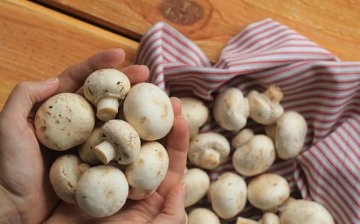

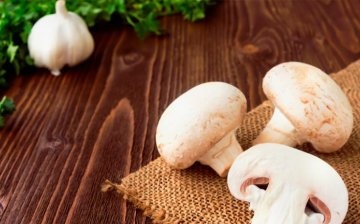

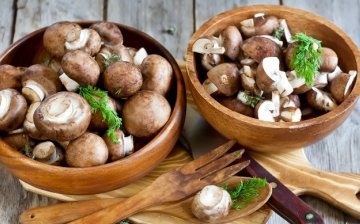
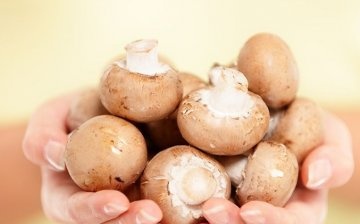
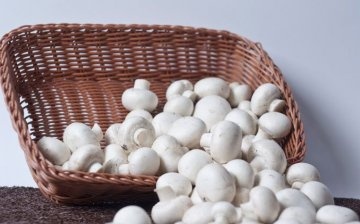







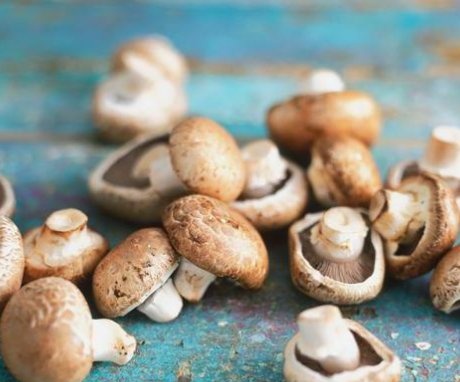
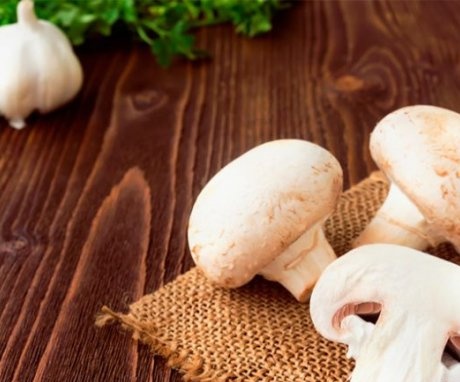

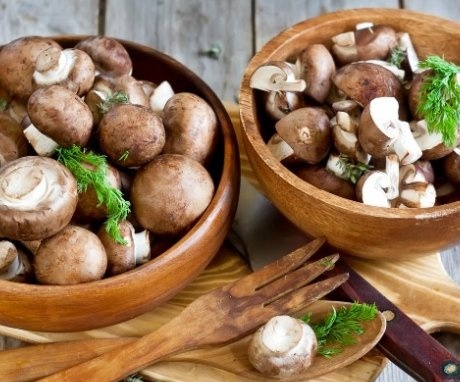


I'm a very squeamish person, so I don't eat any mushrooms except champignons, although I really like mushrooms. Champignons attract with their appearance, not a single worm. I didn't know that you can grow them at home. I'd love to try it. Maybe someone knows how to do this correctly and what nuances are there? Thanks in advance.
I love mushrooms very much, I have nothing against champignons, but I have never met them in nature, and purchased ones seem tasteless to me and do not even have a strong mushroom smell. I marinate them, fry them in sour cream or mayonnaise, but I have to add "real" to them for the aroma mushrooms.
I often buy champignons in stores. Itself did not collect, did not meet. I choose whole mushrooms, as whiter as possible, this speaks of their freshness. Unlike forest mushrooms, they are less aromatic, but always available and safe.
As far as I know, champignons are undesirable for people with gastritis, liver and kidney diseases, as well as for children under 12 years old. Pregnant women are also advised to refrain from using them.